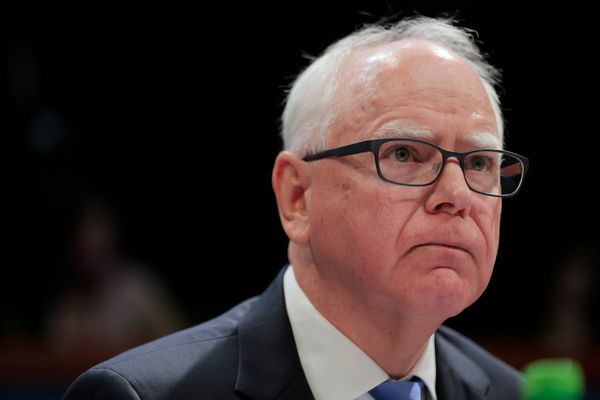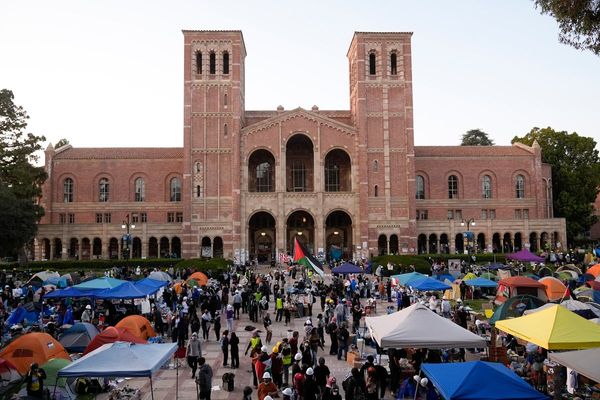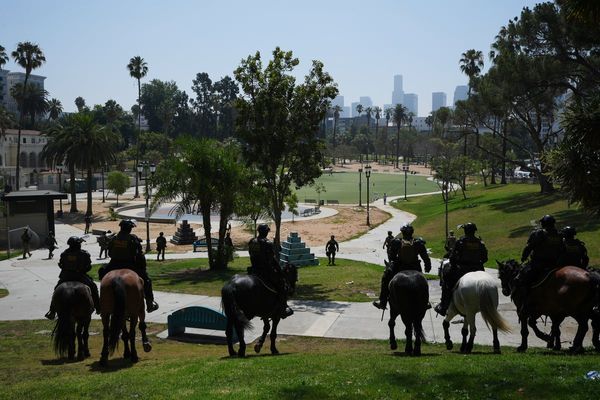
The Russian missiles come to Zaporizhzhia when the “people’s dreams are at their deepest”, says Oleksandr Starukh.
The governor of this south-eastern region of Ukraine since 2020, Starukh, 49, took the call from his bed at 5.08am on the morning of 24 February when one of the first missiles of the Russian invasion had hit a local air defence system. Nearly eight months later he is still taking the dawn calls.
The Russians generally strike, he says, at 2am, 4am and 6am.

The latest raid out of the dark had been just a few hours earlier, when 10 S-300 cruise missiles and four Iranian-made Shahed-136 kamikaze drones crashed into the suburbs of the region’s eponymous capital at 5.30am on Saturday morning.
This time the missiles had been targeted – albeit poorly – at two key electricity substations, while the drones hit the seaport, destroying a civilian boat but little more.
At one of the missile blast sites that was accessible, there were burned-out cars, smashed windows and traumatised children and elderly couples. But no one had died. It was a good morning.
The people of Zaporizhzhia have not been so fortunate of late.
In the last two weeks, 70 civilians have been killed in the night-time terrors unleashed by Vladimir Putin’s war.
Walking by one devastated high-rise apartment block in the north-west city suburb of Osypenkivsʹkyy Zhytlomasyv, Bogdan Govelov, 23, wearing heavy bandages around his head, and his mother Olga, 46, can put a face and story to those numbers.
At 2.30am last Sunday, their world was ruined.
A missile hit their building. The impact point was clear from the missing vertical line of apartments in the centre of the block.

Olga’s husband, Serhiy, 56, was blown by the explosive wave of the blast out of the window of their apartment on the seventh floor.
Bogdan and Olga, after being freed by neighbours from their apartment, whose front door had been distorted by the heat, ran down and out of the block to where Serhiy was lying at the bottom in a huge crater.
They tried to pull him out but instead watched as his internal organs spilled out into the dirt. “He was still alive, he was still alive,” says Olga. The grief has put them in an almost trance-like state.
Bogdan is evidently seeing the pictures unfold in his mind as his mother recounts the awful events. The trees outside the apartments have a peculiar foliage today: ripped blouses, trousers, skirts and T-shirts catapulted some 20 metres on to their branches from washing lines on the balconies of shattered homes. A total of 15 people died in this strike.
The region of Zaporizhzhia, and its capital, is one of the four provinces, along with Donetsk and Luhansk to the east and Kherson to its south-west, that were said by Putin to have been annexed into the Russian Federation on 1 October.

The truth is that the frontline in Zaporizhzhia, some 18 miles east of the city centre, has been almost entirely frozen since the beginning of March, cutting the Ukrainian province in half.
That does not stop the Russians from hitting the city with their cruise missiles, and while the whole of Ukraine has endured an escalation of such attacks in the last week, Starukh holds up a graph on his phone showing that the number of hits rose sharply here about three to four weeks ago. He is being interviewed in a lecture hall at Zaporizhzhia’s National University rather than the council building, as nearly every one of its windows is smashed. “It would be a bit chilly,” he says with a chuckle.
A generous interpretation of the night-time strikes is that the Russians are seeking to avoid civilian casualties. The reality on the ground, however, is that whether due to incompetence, faulty equipment or malice, they are causing unimaginable misery, citizens say.

On the streets of Zaporizhzhia, people recognise the name of Gen Sergei Surovikin, dubbed ”General Armageddon” for his role in the flattening of the Syrian city of Aleppo. They worry about what his appointment by Putin last weekend might mean for them.
Starukh, however, refuses to distinguish between Putin’s military high command. “They are all the same – the same Soviet generals, and they use the same old books from the 1970s. They want to destroy Ukraine and Ukrainian infrastructure”.
The prospect of Putin seeking to level the city, as he did Mariupol 139 miles south-east, remains at the forefront of the minds of the civilian and military authorities.

Three rings of defences have been placed around the city, in order to ensure the distance is too great for tank and artillery fire to get through, but there is no complacency.
“We are very worried about that. But we have experience. We have taken a lot of refugees and officials from Mariupol and we always ask them how it happened, why it happened, what about their experience of Russia’s raids, how Russia invaded Mariupol and how they shelled Mariupol. We have learned from this experience.”
Starukh’s frustration, alongside the remaining shortfall in the air defences promised by Nato allies, is that not enough of the city’s residents have heeded his advice to evacuate. His wife and two children in their 20s are in Kyiv. But of the 700,000 prewar population, about 500,000 still remain.

“You know, 70% of the Zaporizhzhia city’s population have never left the edge of the region,” he says in explanation. “They are very scared to meet new people, that they will not have money. You know, there is one old woman I know whose village is under constant shelling, and she sleeps in a shelter in the night in the city centre and then goes back to dig and plant potatoes during the day.”
That is not to say that the people of Zaporizhzhia enter the night with anything but foreboding. Tatiana Drobotia, 32, who helps people at the Palyanytsya volunteer centre patch up those caught up in the blasts, heard all 10 explosions that morning.
Often, she says, the air raid sirens only go off only after a missile has hit. “I wake up from the missile shelling, and then I pick up my pillow and some warm clothes and go to the bathroom, for example, or a place where there are no windows, because we don’t have already time to go to the shelter because it’s really dangerous to go out of the house,” she says. “We don’t sleep well. Sometimes, for example, I can sleep but my husband doesn’t, so you know in my our family, it’s like someone also needs to be on duty.”
There is, however, a determination to stay, Drobotia adds.

Before entering politics, Starukh was a historian, lecturing at the same university where he is speaking today, an expert on the creation of the independent Ukrainian People’s Republic between 1917 and 1920, before the country became part of the USSR.
He believes Zaporizhzhia will have to wait it out until Ukrainian forces can retake Kherson, which is the gateway to both Russian-held Crimea in the south and Ukraine’s Black Sea ports. “We are solving the problem that our Ukrainian grandpas and grandmas, they hadn’t solved yet with the Russian terrorists,” he says. “If we do not solve this big question with Russia, our children will suffer later.” He fears there will be many more sleepless nights to come.







